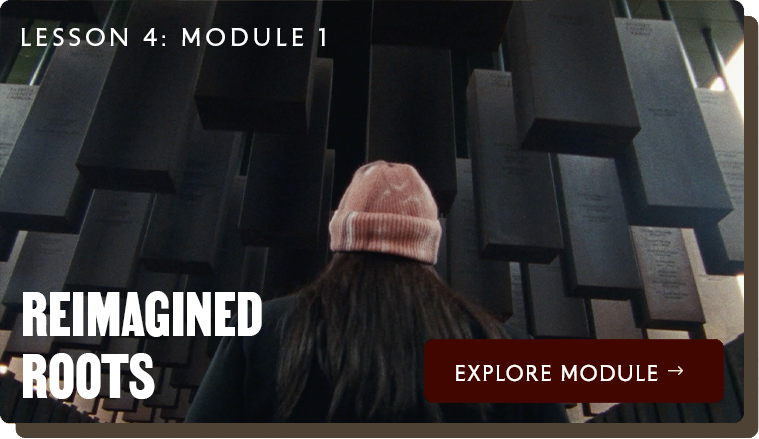In the movie “ORIGIN,” Isabel Wilkerson’s character reminds the audience that when you live in an old house, things may not work as well as they once did. She reminds the audience that you can choose to ignore the broken pipes or the roof that needs fixing, but you do so at your own risk. In this lesson, students will learn how historical reconciliation, education, technology and environmental awareness intersect with efforts to dismantle caste systems.
In the movie “ORIGIN,” Isabel Wilkerson’s character reminds the audience that when you live in an old house, things may not work as well as they once did. She reminds the audience that you can choose to ignore the broken pipes or the roof that needs fixing, but you do so at your own risk. In this lesson, students will learn how historical reconciliation, education, technology and environmental awareness intersect with efforts to dismantle caste systems.
Lesson Four
Objectives
By the end of the lesson, participants will be able to:
- Dissect the ”America is an old house” metaphor and use it to consider ways to understand, disrupt and dismantle caste.
- Understand how caste and hierarchies show up in technology.
- Develop an understanding of social structures and their impact on societies.
By the end of the lesson, participants will be able to:
- Dissect the ”America is an old house” metaphor and use it to consider ways to understand, disrupt and dismantle caste.
- Understand how caste and hierarchies show up in technology.
- Develop an understanding of social structures and their impact on societies.
Courtesy ARRAY Filmworks
Courtesy ARRAY Filmworks
INTRODUCTION
When a house stands on a fragile foundation, even tiny cracks that run deep beneath the surface can magnify over time, causing big problems. Similarly, systems at the base of American society can quietly exist and fuel injustice.
Close your eyes and picture America as a house, with a foundation cracked by the roots of overgrown trees. The individual tree roots disrupting the home’s base— American society—might each be identified by their societal or systemic names: the criminal justice system, gender inequity, faith-based disagreements or nationalism, for example.
If America is indeed akin to an old house, it has fallen to disrepair. As citizens, we sit on stolen land and we are propped up by laws created to classify some people as an untouchable caste. Some might say America is in need of a new foundation.
OUR EXPERIMENTAL SOCIETY
Since the brief and ambitious twelve years of Reconstruction from 1863 to 1877, the United States has stumbled over itself to make good on the ideals laid out in its constitutional blueprint, meant to construct an experimental society. However, the Constitution conceived, written and signed by wealthy, white land-owning men was designed to omit the very people who continued to construct the United States of America, by field, by road, by harvest and—indeed, brick by brick—for over 250 years.
In this lesson, we examine how the roots of injustice pervade two elements of our society. Like the unseen damage within the framework of a house, these systems have the power to shape and mold the lives of their inhabitants.



